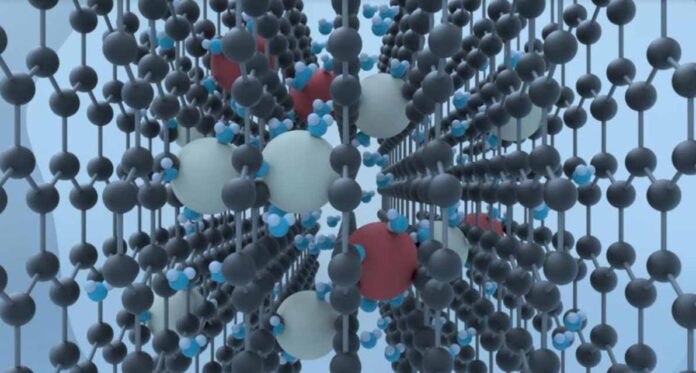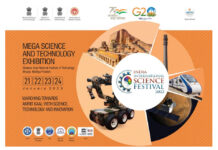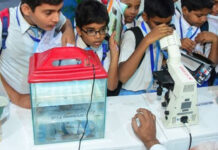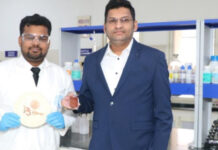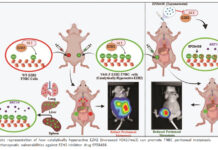New Delhi, Feb. 08: Researchers at the Indian Institute of Technology Gandhinagar (IITGN) have developed a cost-effective water desalination technique that can successfully remove more than 99% of salt ions and other impurities to make seawater drinkable. The method is cost-effective and environment friendly. The technique could controllably manipulate graphite inside aqueous solutions without damaging the structural integrity of graphite. The findings were recently reported in Nature Communications, an international high-impact journal.
According to a report from the World Health Organisation (WHO), nearly one-fifth of the world’s population lives in areas devoid of clean drinking water. The continuous increase in population and enormous energy demands have put immense pressure on conventional clean water resources. On the other hand, the widely used Reverse Osmosis (RO) technique for desalination is expensive, wastes more water, and is highly energy-intensive, which typically requires hydrostatic pressure of 60-80 bar. With rising demand for potable water and continuously shrinking freshwater resources, more countries will have to turn to desalinate seawater to meet the needs.
Motivated to find a way, a research team led by Prof GopinadhanKalon, Assistant Professor, Physics and Materials Engineering, IITGN, created controllable water transport channels in graphite crystal with the help of an electric field and potassium chloride (KCl) ions, which allowed only fresh water to move through the crystal and blocked all the salt ions. The research team comprises IITGN PhD scholars Lalita Saini, AparnaRathi, SuvigyaKaushik, and a postdoctoral fellow Siva SankarNemala.
The research is inspired by the trees’ natural intake of water that uses the capillary effect. Selective transport of molecules and ions is commonly observed in biological systems. Mimicking these biological channels could result in highly efficient filtration systems. The research team used the capillary process in the technique, which does not cost energy, and in fact, the evaporation of water happened spontaneously without any external pressure. The evaporation rates provided a back-calculated pressure of 50-70 bar arising from the capillary and other forces present inside the Nanoscale channels.
The first author of the study, MsLalitaSaini, said, “Natural graphite is not absorptive to water or any ions including Protons. However, by its nature, the graphite crystal also does not allow any water molecules to pass through it because there is not enough space for the movement of these molecules. This issue was solved by using an electric field and inserting potassium chloride (KCl) ions in it, which create some space inside the graphite crystal and provide a stable structure for easy passage of water molecules, at the same time hindering the movement of any salt ions, giving drinkable water.”
The researchers found that this technique is self-sufficient and can successfully remove more than 99% of salt ions and other impurities from seawater, making it entirely safe for drinking. Moreover, carbon materials like graphite are antimicrobial, reducing the number of filters required for desalination.
Carbon is abundant in nature, and India is the second-largest graphite producer in the world. The current experiment has utilised natural graphite. However, the team is also devising a method that does not require natural graphite; instead, they can synthesise graphene (one-unit layer of graphite) from waste, plastics, wheat, sugar, chocolate etc. and assemble it to make a graphite-like structure.
The present 2x2mm sized device made by the research team has flow rates comparable to RO technology without using electricity. Since this involves fewer process filters, the water wastage is expected to be much lesser. The water evaporation and water filtration processes used in this technique do not involve any electricity, and therefore it does not produce any gas emissions, making it environment-friendly. The team is now developing a direct point-of-use water filter using this technique to make it accessible for the masses.
Prof GopinadhanKalon said, “This method is not only limited to graphite, but also to a large number of layered materials, like clays, that could be explored for high-performance separation applications. With abundant seawater and appropriate plant design optimisation, our method holds a bright future in providing drinking water for everyone on the planet.”
Moreover, this technique can also prove helpful in designing filters for gas purification, proton exchange in a fuel cell, chemical separation, recovery of precious metal from waste, etc. It can also be suitable for dehumidification applications as expanded graphite has high water evaporation rates. (India Science Wire)


